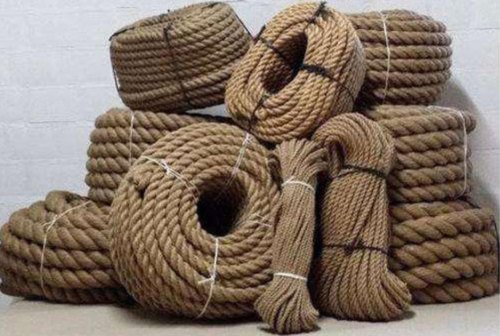Ropes are distinguished as synthetic or natural, but all aspects differentiate them according to their use. This article outlines the Top types of natural fiber and synthetic ropes available today and how they are used.
The natural fiber ropes
These strings are produced out of environment-friendly fabrics like cotton and sisal.
Natural fiber ropes types
- Sisal ropes: This material has a coarse and hard texture, making it resistant to harsh environmental conditions. Although sisal ropes cannot be compared to manila fiber regarding flexibility and strength, they are more biodegradable and water absorbent. They can be quite uncomfortable when working with them because of their rugged nature.
- Cotton ropes: These rank among the top types of natural fiber and synthetic ropes. Many people prefer to use them during camping and artwork because they are long-lasting and can easily withstand warm conditions because they rarely stretch. Cotton is weightless and gentle to work with but not ideal to be used in damp areas since they form molds.
- Coir fiber: The fabric is created from coconut plants, making them have a rough and hairy feel but weak. Because of their lightweight and eco-friendly characteristics are commonly used today to make doormats and garden landscaping.
- Manilla rope: It is a very popular type of rope produced from natural hemp fibers that make it very absorbent and non-stretchable. It is good for making tug-of-war ropes and landscaping. It is also water-resistant and durable; hence preferred to make fishing nets.
Synthetic fiber ropes
They form part of the top types of natural fiber and synthetic ropes. They are extracted from artificial materials such as nylon and polyester, although they can deteriorate easily because of their texture.
- Nylon ropes: They are well known for their elasticity, strength, and durability. These strings are appropriate for common and manufacturing applications. Additionally, they rarely absorb water and should not be used in hot conditions because they toughen and become tricky to use.
- Polyester ropes: They come in second among the top types of natural fiber and synthetic ropes in terms of strength. They are mainly used for mooring ropes while being water and oil-resistant. They are better off not being exposed to heating.
- Polypropylene ropes: The all-around fabric that is light and easily floats in water, making them ideal for berth lines. They hardly survive hot weather and are highly susceptible to friction. They are also poor conductors of electric power hence suitable for electrical work.
There are best cotton rope and different types of ropes today, and all serve different purposes. It is important to understand what each type of rope is made of and used before deciding to have a string that will cater to your specific needs.
